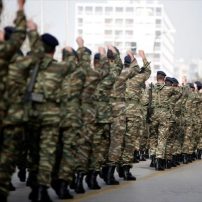
Death by electricution in the army. Ineffective research. Violation of the right to life
JUDGMENT
Ohanjanyan v. Armenia 25.04.2023 (app. no. 70665/11)
SUMMARY
Ineffective investigation into the death of the applicant’s son during his compulsory military service. Failure to fulfill the obligation to provide a reasonable explanation for his death.
The applicant, Suren Ohanjanyan was an Armenian national born in 1953 and lived in Yerevan. His widow continued the application in his place.
The applicant’s son, T. Ohanjanyan, died in 2007 during his compulsory military service. The official cause of death was electrocution when he accidentally touched the wires of a radio station antenna mast, which were not properly grounded. However, the investigation was ongoing as of January 2022.
The ECtHR found that the investigation carried out by the authorities was not thorough and was not carried out with reasonable speed. In addition to these, it was seriously deficient. The Court could not find the conclusions of the investigation reliable or the explanation for the soldier’s death convincing and satisfactory. According to the Court the authorities had failed to fulfill their obligation to provide a reasonable explanation for the death of the applicant’s son, which occurred while he was under their supervision.
The Court found a violation of both the procedural and substantive part of Article 2 of the ECHR and awarded an amount of 50,000 euros for mental anguish.
PROVISION
Article 2
PRINCIPAL FACTS
The applicant, Suren Ohanjanyan, now deceased, was an Armenian national who was born in 1953
and lived in Yerevan. His widow has continued the application in his stead.
The case concerns the death of the applicant’s son, T. Ohanjanyan, in 2007 during his compulsory
military service. The official reason for the death was electrocution through his accidentally touching
the guy wires of a radio relay station antenna mast, which was not earthed properly. The
investigation was, however, still ongoing as of January 2022.
Relying on Article 2 (right to life) of the European Convention on Human Rights, the applicant
strongly disputes the electrocution hypothesis, and complains that the authorities failed to provide a
plausible explanation for or properly investigate the death of his son. He believes that his son was
murdered, and alleges that the authorities failed to properly examine photographs of the corpse
that show signs of ill-treatment, including missing teeth and burn marks.
THE DECISION OF THE COURT…
There is nothing to suggest that any investigative measures have been undertaken to clarify a number of crucial circumstances surrounding the events in question, including: the reasons for T. Ohanjanyan leaving the military unit at a late hour after the evening roll-call; the inconsistent statements about whether he had been at all present during the evening roll-call ; the identity of those responsible for dismantling the radio relay station in question despite the explicit instruction from the prosecution to refrain from changing anything at the scene of the incident and, most importantly, the reasons for doing so; and the reasons for S.S., who had been the commander of the military unit for about five years prior to the incident, being transferred to another military unit to continue service at a lower position. In relation to the last point, the Court notes that, according to the material before it, there had been an internal investigation by the Ministry of Defence in relation to T. Ohanjanyan’s death. However, despite the Court’s specific request in that regard when the present application was notified to the Government, the latter failed to provide a copy of the relevant report and material.
In addition, there appear to have been no attempts to explore other possible lines of inquiry, including that of a criminal act , despite the existence of evidence showing signs of possible ill-treatment, including T. Ohanjanyan’s damaged clothing and a number of injuries on his body . The Court notes in relation to the injuries that in the course of the investigation the applicant had submitted photographs of the body showing several other injuries, including missing teeth, which had remained unrecorded during the inspection of the body and the autopsy, and that the authenticity of those photographs had, moreover, been confirmed by forensic evidence .
Furthermore, none of the key witnesses was questioned further, not even A.G. who, according to the official version, had discovered the body and had also received an electric shock which had apparently not harmed him. Analogous considerations apply to T. Ohanjanyan’s friends who had been in contact with him on the day of the incident, including D.H., who at some point testified against S.S. for having assaulted T. Ohanjanyan, and to N.M., the senior officer in charge of the military unit that day, who had given conflicting accounts of the events preceding T. Ohanjanyan’s death.
Instead, the main focus of the resumed investigation appears to have been locating the radio relay station in question which had been dismantled years previously in unknown circumstances and for reasons which were never clarified during the investigation, by sending enquiries to various bodies and questioning witnesses. Moreover, despite the Criminal Court of Appeal’s indication in its decision of 17 October 2018 that the hypothesis of electrocution could not possibly be based on the results of a forensic examination of another (similar) radio relay station, the authorities conducting the investigation continued to commission forensic expert reports of a different radio relay station of the same model.
The Court acknowledges the practical difficulties of investigation work in the present case after such a long period of time has elapsed since the events in question. However, that delay and the lack of diligence in carrying out a number of important investigative activities in a timely manner are equally attributable to the authorities and, as already noted, the Government have failed to provide an explanation for such a delay.
In view of the above, the Court considers that the investigation in the present case was not sufficiently thorough and was not conducted with reasonable expedition. It had deficiencies, as indicated above, which undermined its ability to establish the facts surrounding T. Ohanjanyan’s death and insufficient efforts were made, following the relevant domestic courts’ decisions , to remedy those deficiencies . In sum, the authorities failed to carry out an effective investigation into the circumstances of T. Ohanjanyan’s death.
The Court therefore concludes that there has been a procedural violation of Article 2 of the Convention. It accordingly dismisses the Government’s objection that the applicant’s complaints under Article 2 were premature .
(ii) Substantive limb
T. Ohanjanyan was performing compulsory military service in the armed forces of Armenia when he was found dead with a number of injuries, including missing teeth, burn marks on his feet and injuries on the head, ear and jaw and under his eye which, albeit unrecorded by the autopsy report and other documents , were visible in the photographs submitted by the applicant to the domestic authorities . Those photographs have also been produced by the applicant in the proceedings before the Court. As already noted, the lengthy investigation into T. Ohanjanyan’s death eventually failed to establish the facts surrounding his death.
In view of the apparent carelessness with which the investigation was conducted and the lack of satisfactory explanation for a number of serious discrepancies with regard to its findings, to the point that the domestic courts refused to endorse the version of the events established by the investigation, the applicant could be forgiven for seriously questioning the official version and thinking that the investigation might be covering up a more sinister explanation, such as murder.
Hence, having concluded that the investigation carried out by the authorities was seriously deficient, the Court cannot consider the conclusions of that investigation to be reliable or the explanation for T. Ohanjanyan’s death to be convincing and satisfactory. It follows that the authorities cannot be regarded as having discharged their obligation to provide a plausible explanation for the death of the applicant’s son, which occurred while he was in their care.
There has accordingly been a substantive violation of Article 2 of the Convention.


